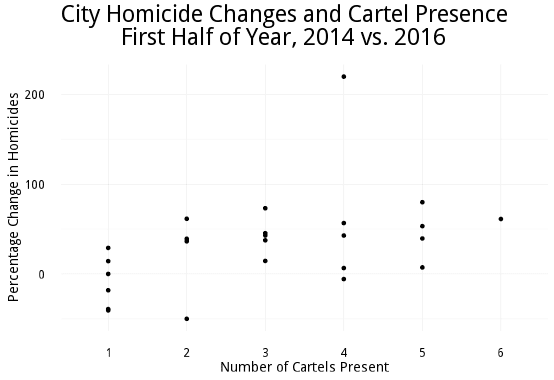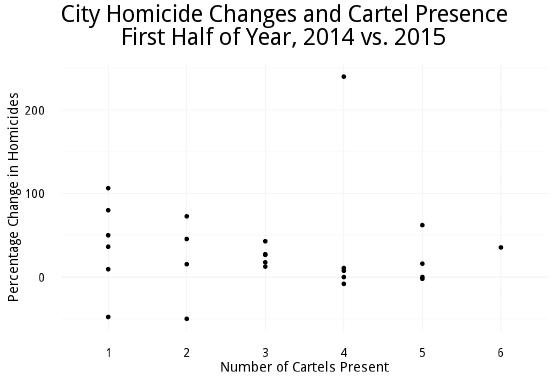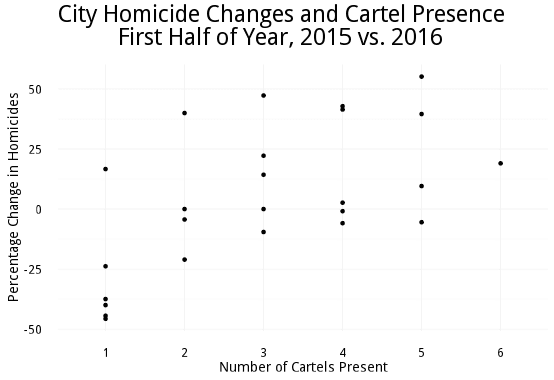Heroin and the Ferguson Effect

In my column this week, I mentioned a recent report from Sean Kennedy and Parker Abt of the American Enterprise Institute. Comparing 25 cities, they found a close correlation between Mexican heroin-cartel activity (as of a 2015 federal report) and changing homicide trends. In cities with only one cartel, homicide went down or stayed steady between 2014 and 2016; in cities with multiple cartels vying for turf, homicide went up. This pattern held for 21 out of the 25 cities.
Here are their data—which I requested for another project I’m working on (and many thanks to them for providing)—in chart form:
The pattern is indeed striking. And interestingly, it varies over the two-year period. When you compare just 2014 and 2015, there doesn’t seem to be much of a pattern at all—most cities saw homicide increases regardless of cartel activity. (This next chart just includes Kennedy and Abt’s data, but I confirmed the result by expanding them to include more cities and data for the full years.)
But between 2015 and 2016, the pattern is quite dramatic. Most of the cities with only one cartel actually saw their homicide rates drop quite a bit. If you tweak Kennedy and Abt’s test a little, you can say a single pattern explains 23 out of the 25 data points: Cities with only one cartel saw declines of at least 12.5 percent; cities with more than one cartel saw smaller declines or, more frequently, increases.
Milwaukee, which has one cartel, is probably the most dramatic example: its homicide rate doubled between 2014 and 2015, but fell by a third in 2016.
If I had to weave together a narrative that explains everything—and I’m an opinion journalist, so why not?—it would be something like this: between the first half of 2014 and the first half of 2015, we had a lot of unrest related to police shootings of black suspects, including in Ferguson itself. This played a strong role in driving up crime in 2015. As I noted in an earlier piece, cities with high black populations were more likely to see crime go up, and in several cities (e.g., Baltimore and Chicago), rising crime perfectly coincided with local policing incidents. In 2016, this “Ferguson Effect” may have waned—at least until last week, knock on wood—but rising cartel violence, perhaps a delayed result of the early 2014 arrest of El Chapo, kept crime from falling in much of the country.
There’s much we don’t know yet—for instance, exactly how cartel activity is changing over time in all these cities, and which other demographic variables (Hispanic population, family structure) correlate with crime increases. And we shouldn’t draw too many conclusions from a small set of big cities. So file that under speculation for now.
Robert VerBruggen is managing editor of The American Conservative. Follow @RAVerBruggen



Comments